Mosura ya Mosura
Mosura ya Mosura
Mosura ya Mosura
Hard to believe my first two Halloween-inspired posts this year would be sphingid moths, not a group of animals typically associated with being scary, spooky, or dangerous. But after having very recently acquired this big bad beast, I had to channel my inner Shobijin and summon it for the Blog! I am referring to the larva of a tobacco hornworm by Accoutrements from 1996, an unusual novelty figure for which I was totally unaware of until forum member K907 alerted me to it on eBay (well, maybe totally unaware, see last paragraph below). Of course I snatched it up as soon as possible, and just in time for an October review! I am sure there are pedants out there that will be quick to want to point out that Mothra was based on a saturniid moth, not a sphingid, but hey, it’s all in the holiday spirit of the Blog! The figure comes with a tag that includes the animals common English and Latin names and some general facts, both on the species itself and caterpillars generally.
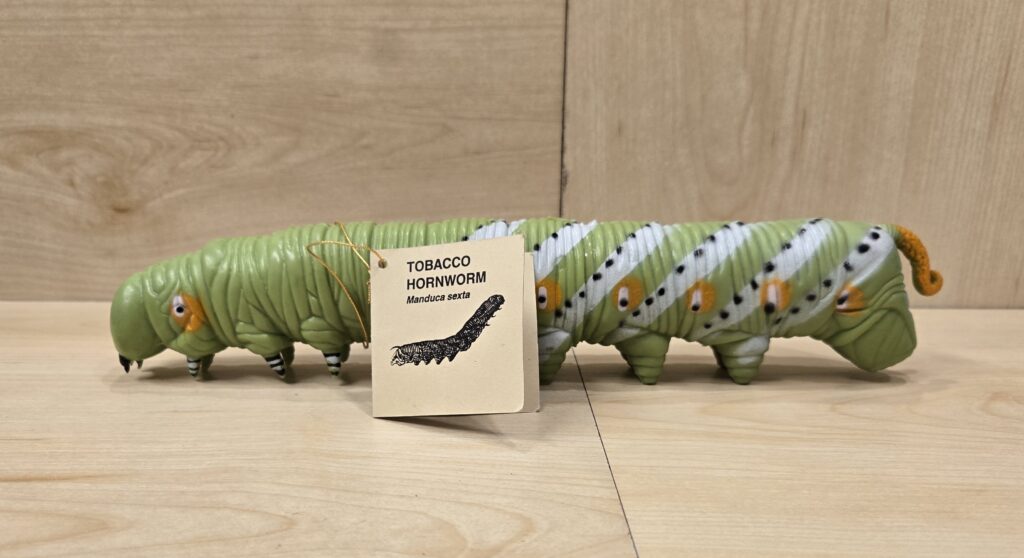
The tobacco hornworm (Manduca sexta) is a large sphingid moth distributed throughout much of the Americas, from northeastern United States south to Florida, west to California, and south to Argentina. Its original range is possible unknown and it’s likely that some of its current distribution may be due to the cultivation and spread of its host plants in the family Solanaceae, which includes tobacco, tomato, potato, pepper, and eggplant.
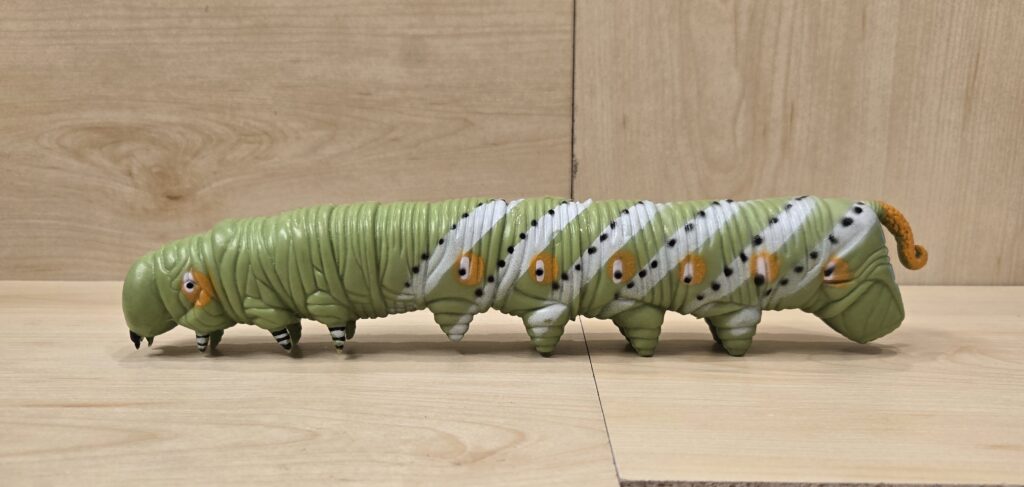

This monstrosity of a model measures 28 centimeters (not including the terminal spine) for a scale of 3.5:1 based on a maximum length of 8.1 cm for a mature larva.
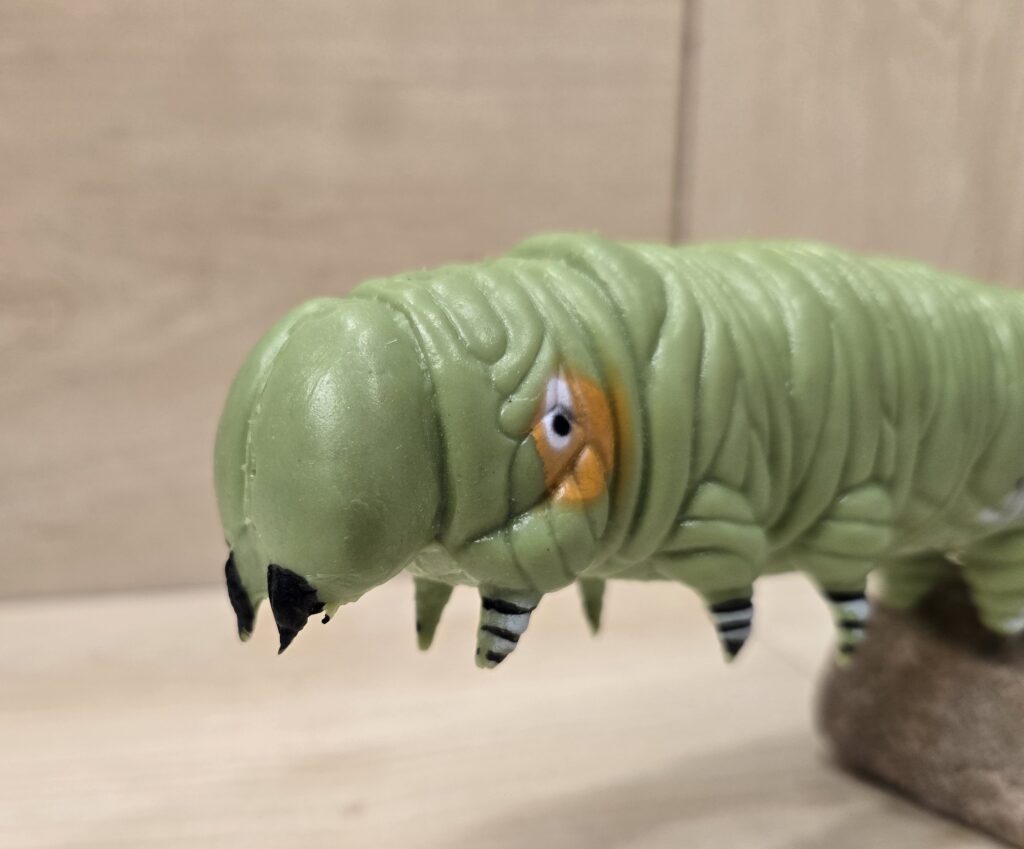
Most caterpillars have a rather simple, tubular design, and the sculpt here is quite accurate in that respect. Because of its size, wrinkles in the tegument are well-defined over its entire body. The horn is textured, bent downwards, and curled. I have never seen this morphology on a Manduca caterpillar, but it is common with members of the genus Acherontia (death’s-head hawkmoths). I speculate the original artist inadvertently referenced some Acherontia caterpillars in the design of this figure. Larvae of A. atropos (which, interestingly, an adult of was my previous review earlier this month) can sometimes have a similar color pattern to M. sexta. As I studied this model more for this review I started to wonder, was this intended to be a death’s-head hawkmoth all long? Hmmmm….

When we get to the color, however, it is more in line with M. sexta. The base color is green, the kind of green common to toy frogs, mantids, and caterpillars of the era. The accents are mostly correct. There are seven spiracles painted on each side, white with a black center and surrounded by orange. Ideally, there should have also been spiracles painted on the two body segments between the three pairs of anterior ‘true’ legs and the five pairs of posterior ‘prolegs’. Likewise, while there are six diagonal white lines accented with black spots, there really should be a seventh, starting on the two body segments between the two sets of legs. Other minor color accents include black mandibles, claws of the true legs ringed in black and white, and an orange horn. Overall, easily recognizable as M. sexta and clearly different from the related and morphologically similar tomato hornworm (M. quinquemaculata), which has eight V-shaped white lines on the body rather than seven diagonal white lines.
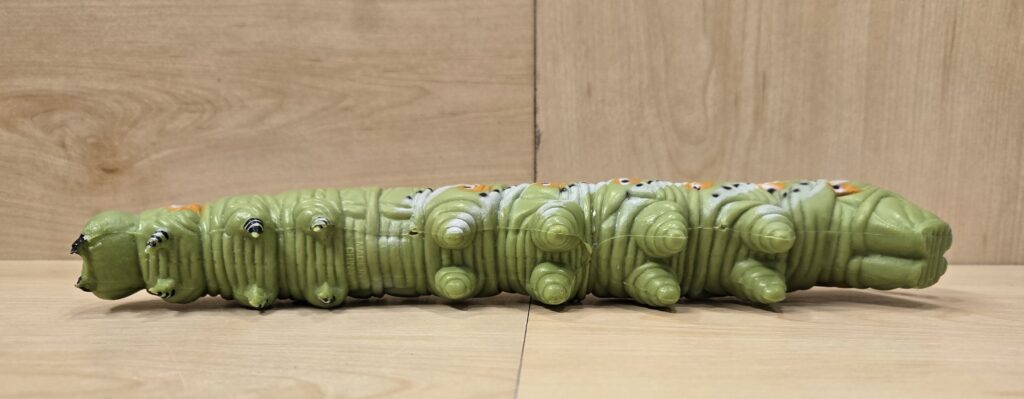
Despite the Acherontia-like horn and minor inaccuracies in the paint job, this is a cool, unusual novelty toy that is best suited for collectors of interesting taxa and arthropod aficionados, like myself! I am sure it is very rare and hard to come by these days, as indicated by me being unaware of its existence after having collected arthropod figures for over 15 years! I was lucky this one turned up on eBay and even luckier that K907 alerted me to it! That being said, it is possible I have seen this figure before. While preparing this review, I learned that Accoutrements, which started in the 1970s in Los Angeles, moved to Seattle in 1983 in conjunction with Archie McPhee novelties. Well, when I bought the Sun Wai puss moth caterpillar (below) from Archie McPhee several years ago (sometime before 2015), I remembered there being a large hornworm figure on the site, too. I didn’t buy it at the time (and for the life of me, I can’t remember why I didn’t), and I bet that it was this very figure I am reviewing today! If so, funny how it finally caught up to me after all these years!
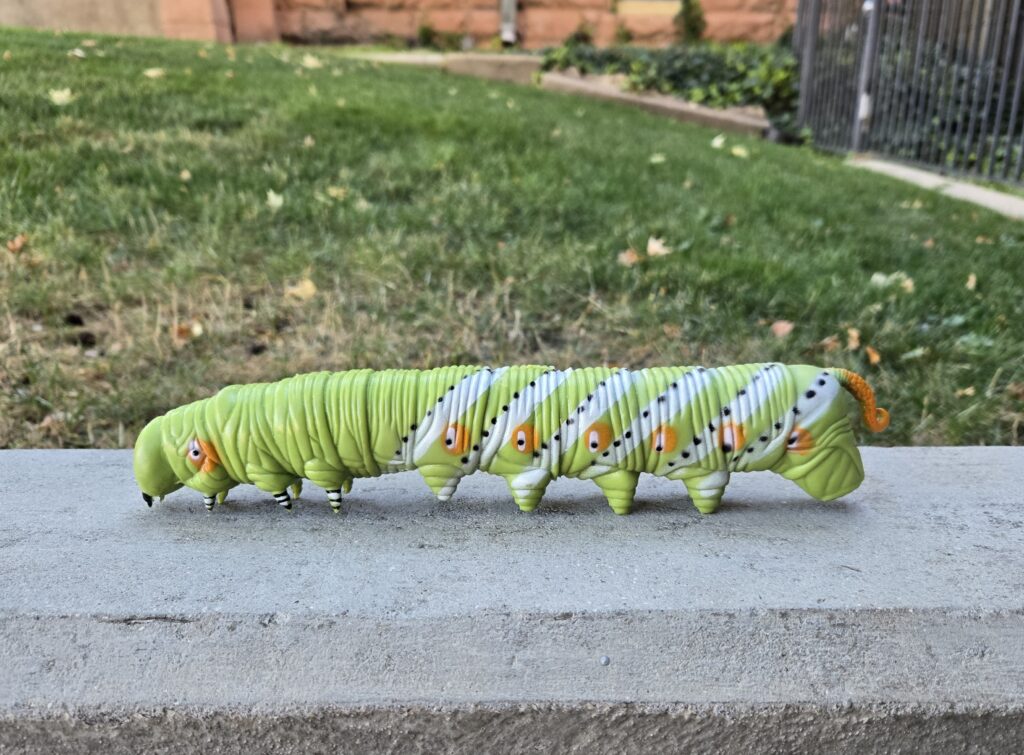
Here it is with other gigantic caterpillar figures, the aforementioned Sun Wai puss moth caterpillar and Kaiyodo Sofubi Toy Box Asian swallowtail:

Disclaimer: links to Ebay and Amazon on the AnimalToyBlog are affiliate links, so we make a small commission if you use them. Thanks for supporting us!



